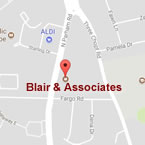
FLEXIBLE SAVINGS ACCOUNTS (FSAs)
Heads-up for Employers and Workers
8 Enhanced Tax Benefits for Both FSAs & DCFSAs
July 2021
Employers that offer a Flexible Savings Account plan to employees, now need to know the expanded rules for 2021/2022 … and at the employer’s option consider modifying their FSA plans to incorporate these temporary rule changes.
The $1.9 billion C-19 relief package signed by the president last December, provides for enhanced benefits to workers participating in employer-sponsored FSA plans … again, if the employer chooses to adopt these interim plan revisions.
FSAs … a Quick Recap
FSAs offer employees a tax-advantaged way to pay for eligible health care and dependent care expenses. Employees may choose to enroll in a plan sponsored by their employer and fund the account with pretax dollars. Funds withdrawn to pay for qualified expenses are not subject to income tax.
A downside was that participating employees could lose unused FSA funds at the end of each year … not so under the revised rules. More on that in a bit.
The changes in the law apply mainly to Health FSAs and Dependent Care FSAs. So, before we deal with the revised legislation details, here’s a summary of each account.
• Health FSAs allow participants to use the funds for a variety of health care-related expenses, including deductibles, copayments, medical equipment and medications.
• Dependent Care FSAs (DCFSAs) permit the use of DCFSA funds for expenses related to caring for qualified dependents, such as child care or elder day care costs.
8 Ways Flexibility Enhanced Under the New Law
The pandemic triggered federal action to adopt new rules affecting FSAs. Under the old regs, many participants saw their FSA dollars unspent as medical appointments were postponed and child-care facilities closed … and thereby lost. Similarly, loss of job resulted in similar forfeiture of FSA contributions.
So, here’s a rundown on the 8 primary remedies incorporated in the new law. Keep in mind, adoption is at the employer’s option.
1. The new rules permit the carry-over of unlimited funds from plan year 2020 to 2021 … and again in plan year 2021 to 2022. This is in significant contrast to the previous law which allowed no carryover for DCSFSAs … and a limit of $550 from one year to the next for all other FSAs.
2. DCSFA participants enjoy a substantial bump in the limit on contributions in 2021. Married couples filing joint tax returns may now contribute up to $10,500 - up from $5,000. For single filers, the limit is $5,250, an increase from $2,500.
3. DCFSA child age limits are extended under the new law for participants who enrolled in a DCFSA before January 31, 2020. A qualifying child who turned 13 during the plan year may continue to receive distributions from the plan’s account until they reach age 14 or the 2021 plan year ends.
4. The contribution cap for health FSAs in 2021 is $2,750 for single filers and $5,000 for joint filers or families.
5. Employees who ceased participating in an FSA in 2020 or 2021, may now be permitted by their employer to withdraw their account balance until the end of the plan year.
6. All FSA plans with years ending in 2020 or 2021 will qualify for a 12-month grace period to use contributed funds.
7. For FSAs with plan years ending in 2021, participants may change contributions at any time. Under the prior rules, changes were permitted only if there was a qualifying life event.
8. Employees that participated in an FSA, and no longer employed by the plan sponsor/employer, may access funds that remain in their FSA account. Previously, those funds were forfeited upon termination of employment.
For more details, click here to visit the IRS website … or better yet, give Blair + Assoc a call to review the revised rules as they apply to your specific circumstances.
- WHAT DOES THE POPULATION OF VIRGINIA HAVE TO DO WITH IRS LOGJAM?
- NEW & IMPROVED CHILD TAX CREDIT
- WHERE’S MY REFUND!
- Federal Tax Deadline Extension & The New Child Tax Credit
- PPP LOAN FORGIVENESS & VIRGINIA SMALL BUSINESSES
- EXTENDED FINANCIAL RELIEF FOR INDIVIDUALS & BUSINESSES!
- PAYCHECK PROTECTION PROGRAM LOANS
- GET READY FOR TAX-TIME!
- WORKING FROM HOME…WRITE-OFFS DURING THE PANDEMIC?
- CORONAVIRUS…THE IRS…YOUR TAXES
